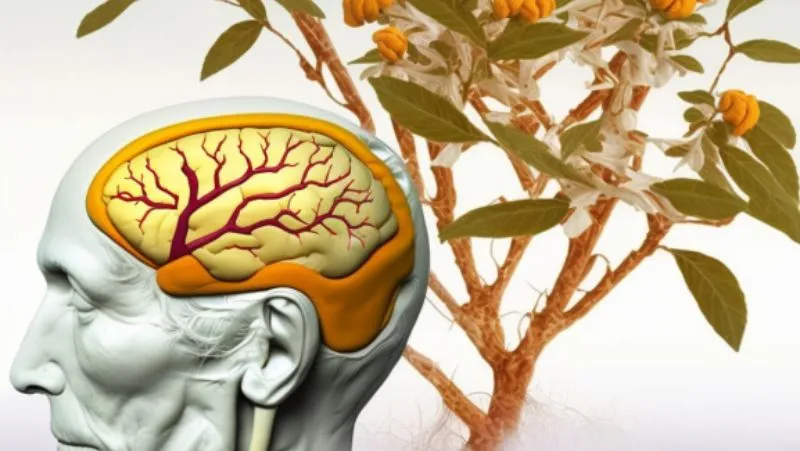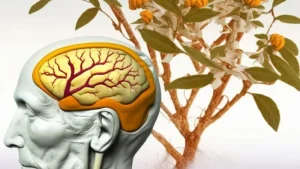Spoilers for this article
- Alzheimer's disease is caused by abnormal phenomena that occur in the brain,memoryand impaired judgment.
- ashwagandha (type of Indian cactus)is used in Ayurvedic medicine as a nerve tonic andmemoryIt is believed to be effective in improving
- However, the causes of Alzheimer's disease have not yet been fully studied.
- In this study,ashwagandha (type of Indian cactus)was found to be effective in protecting nerve cells, especially against Alzheimer's disease and nerve damage caused by HIV infection.
This article is a bit more challenging.
I don't know how to prevent Alzheimer's disease. I don't even know if it's something that can be prevented."
."ashwagandha (type of Indian cactus)I'm still trying to figure out what exactly it does for the
If it has a neuroprotective effect,ashwagandha (type of Indian cactus)ingestion can prevent Alzheimer's disease?"
This article is for the people mentioned above.
This article is the latest in a series of articles for those seeking treatment and prevention options for Alzheimer's disease and HIV-related neurocognitive disorders.ashwagandha (type of Indian cactus)The research will be explained.
ashwagandha (type of Indian cactus)has been shown in recent studies to be effective in protecting nerve cells, and there are high hopes for the development of future therapies.
What is ashwagandha in the first place?

ashwagandha (type of Indian cactus)(scientific name: Withania somnifera Dunal) has been used for thousands of years in Ayurveda, the traditional medicine of India, to treat both physical and mental health problems.stressThe herb has been used as an effective medicine, tonic, and even aphrodisiac.
Nowadays, the effectiveness of these products has been proven by modern science through various clinical studies, and they are attracting attention.
The fruit is an evergreen shrub of the eggplant family. The name comes from the horse's (ashwa) smell (ganda).
Some say it is named after the robust vigor of horses.
▼Recommended Articles

Research Background
Alzheimer's disease is characterized by progressive impairment of memory and higher cognitive functions due to extracellular amyloid plaques and intracellular neurofibrillary changes in cortical and limbic regions of the brain.
- amyloid
-
Amyloid is an accumulation of proteins that have taken on an abnormal structure. Related to diseases of the nervous system, such as Alzheimer's disease and Parkinson's disease.
- plaque
-
A plaque with an abnormally increased accumulation of lipids and cholesterol in the blood vessels.
Plaque covers the inside of blood vessels and obstructs blood flow, which can lead to atherosclerosis and heart disease.
Related to lifestyle-related diseases such as high cholesterol, high blood pressure, smoking, and obesity.
Present,There is no curative treatment for Alzheimer's disease, and research is focused on drugs that slow disease progression.The first two are the following.
ashwagandha (type of Indian cactus)(Withania somnifera) is an Ayurvedic medicine that is used as a nerve tonic andmemoryIt is widely used as an improver.
However, theashwagandha (type of Indian cactus)There are limited data on the potential neuroprotective effects of β-amyloid (1-42)-induced neuropathology in
- Beta amyloid (1-42)
-
A substance thought to be deeply involved in the pathogenesis of Alzheimer's disease.
Beta-amyloid accumulates extracellularly and forms amyloid plaques, which exhibit neurotoxicity leading to neuronal death. It has also been reported that β-amyloid accumulates within neurons and induces abnormal aggregation of tau proteins that form tangles. These pathological changes are known to lead to neuronal death and cognitive decline in Alzheimer's disease.
- tau protein
-
Proteins involved in the structural support of neurons and neurotransmission.
Normal function plays a role in maintaining microtubules within neurons.
However, when tau proteins aggregate abnormally, microtubules collapse, causing neuronal dysfunction and death.
Tangles formed by such aggregation are one of the major neuropathological features in Alzheimer's disease and are an important criterion for pathological diagnosis.
- tangle
-
Intracellular fibrous structures formed by abnormal aggregation of tau protein.
Research Objectives
Alzheimer's disease is a progressive disease that impairs memory and higher cognitive functions of the brain,No cure currently exists.
Therefore, in the present study, we investigated the use of the following compounds, which are widely used in Ayurvedic medicine as neurotropic and memory-enhancing agentsashwagandha (type of Indian cactus)of β-amyloid-induced toxicity and neuroprotection against HIV-1Ba-L (clade B) infection.The purpose of the project was to
| subject of research | Alzheimer's disease, beta-amyloid-induced toxicity, HIV-1Ba-L (clade B) infection |
|---|---|
| Objective. | ashwagandha (type of Indian cactus)To verify the neuroprotective effect of |
| technique | Toxicity studies, cell viability assays, PPARγ level measurements |
- induced toxicity
-
By external stimuli,Abnormal increase in intracellular substances and metabolites, causing cell dysfunction and deathThings to do.
."ashwagandha (type of Indian cactus)The "beta-amyloid-induced toxicity ofashwagandha (type of Indian cactus)has a dysfunctional capacity for β-amyloid.
Because beta-amyloid is the substance thought to cause Alzheimer's disease,ashwagandha (type of Indian cactus)can stop this from working=.Can be expected to prevent Alzheimer's disease.That is to say.
- HIV-1Ba-L (clade B) infection
-
A type of HIV-1, the virus that causes AIDS. This type is mainly found in developed countries such as North America, Europe, and Japan.
In the present experiment, we have used a virus that is resistant to this virus.ashwagandha (type of Indian cactus)This includes verification of the effectiveness of the
Our usual "Let's test Ayurveda with modern science!" Series.
research methods
ashwagandha (type of Indian cactus)Verify the neuroprotective effect ofTo do this, the research team used the human neuronal cell line SK-N-MC cells.
- SK-N-MC cell
-
SK-N-MC cells are a cell line derived from human neuroblastoma cells. It is used for research on Alzheimer's disease, Parkinson's disease, and neurodegenerative disorders.
It has a higher proliferation rate and is easier to handle than other nervous system cell lines.
."The cells are commonly used in experimentsThat is to say.
SK-N-MC cells are used to recapitulate the neuropathology caused by β-amyloid-induced toxicity and HIV-1Ba-L (clade B) infectionStandard MethodIt is.
So it is common to use SK-N-MC cells even when verifying other drugs and herbs.
ashwagandha (type of Indian cactus)was extracted with methanol:chloroform (3:1).
This extraction method is,ashwagandha (type of Indian cactus)was chosen to maximize the extraction of the active ingredients in the
This extractionashwagandha (type of Indian cactus)will be used in this experiment.ashwagandha (type of Indian cactus)That is what I mean.
Neuroprotective effects were evaluated through the following measurements
Object of measurement and evaluation
- cell proliferation
- Diameter of dendrite
- Total dendrites and spine area measured
- MTT cell viability assay level
- Peroxisome proliferator-activated receptor gamma (PPARγ)
I know it sounds difficult.ashwagandha (type of Indian cactus)is effective in preventing Alzheimer's disease and protecting the nervous system.This is not a problem as long as you know that "the
- MTT cell viability assay
-
The MTT cell viability assay is,Experimental method to evaluate the percentage of cells survivingand is used to evaluate cell line viability and cytotoxicity.
The experimental procedure using MTT reagents is simple and versatile, applicable to many cell lines.
Less susceptible to the effects of drugs, cell line viability can be measured more accurately.
- Peroxisome proliferator-activated receptor gamma (PPARγ)
-
PPARγ isProteins play important roles in adipocyte differentiation and diabetes therapyThe following is a list of the most common problems with the
Activated by nutrients and drugs; reduced levels of PPARγ are known to increase the risk of disease.
Research on PPARγ activation is underway to develop treatments for diabetes, obesity, and atherosclerosis.
findings
In this study, we investigated the effects of β-amyloid on neurons.
The results showed that β-amyloid decreases cell proliferation, causing a decrease in dendrites and a reduction in their diameter.
Furthermore, similar results were obtained with HIV-1Ba-L infected cells.
On the other hand.ashwagandha (type of Indian cactus)to β-amyloid-treated and HIV-1-infected samples,Toxic effects neutralized.It was shown that
MTT cell viability assay and peroxisome proliferator-activated receptor gamma (PPARγ) levels,The results support the neuroprotective effect.
From these results,ashwagandha (type of Indian cactus)against β-amyloid-induced neuropathology and neuropathology caused by HIV-1 infection.and suggested to have neuroprotective effects.The first time the company was founded, it was a "new" company.
The following is a summary once again.
| subject of research | Beta-amyloid, HIV-1Ba-L infected cells,ashwagandha (type of Indian cactus) |
|---|---|
| Objective. | To investigate the effects of beta-amyloid on neurons |
| technique | Cell proliferation test, MTT cell viability assay, PPARγ level measurement |
| result | Beta-amyloid decreases cell proliferation,ashwagandha (type of Indian cactus)was suggested to have neuroprotective effects |
If the results of this experiment are to be believed, "ashwagandha (type of Indian cactus)is effective in preventing Alzheimer's disease and AIDSSo that's what you mean.
Conclusion:That ashwagandha has neuroprotective effects.Confirmation of
How was it? I would like to conclude this article by summarizing this article.
Summary of this article
- Alzheimer's disease is caused by abnormal phenomena that occur in the brain,memoryand impaired judgment.
- ashwagandha (type of Indian cactus)is used in Ayurvedic medicine as a nerve tonic andmemoryIt is believed to be effective in improving
- However, the causes of Alzheimer's disease have not yet been fully studied.
- In this study,ashwagandha (type of Indian cactus)was found to be effective in protecting nerve cells, especially against Alzheimer's disease and nerve damage caused by HIV infection.
From research results,ashwagandha (type of Indian cactus)has been shown to have neuroprotective effects.
This could potentially help in the development of future treatments and prevention methods for Alzheimer's disease.
Alzheimer's disease is caused by the accumulation of abnormal beta-amyloid plaques in the brain.
ashwagandha (type of Indian cactus)has been shown to exert neuroprotective effects against β-amyloid-induced toxicity,It may be effective in preventing Alzheimer's disease.
That is all. Thank you very much for taking the time to read this to the end.
Disclaimer
This site is primarily intended toashwagandha (type of Indian cactus)to provide information about the results of the study and not to provide medical advice.
It is not intended to diagnose, treat, or prevent any specific disease or condition.
Always follow professional advice when using the information on this site.
We also cannot be held responsible for any loss or damage that you may suffer as a result of acting on the basis of the information on this site.
Use of AI in Content Generation
This website uses AI-based automatic generation for some content.
The information generated by this automatic generation is checked against actual references and articles, and great care is taken to ensure accuracy and reliability.
It is also intended to enhance the transparency and credibility of this site by appropriately disclosing content created through automatic generation.
We believe that this site can provide richer and more useful content through automation and AI-based content creation, which will enable us to provide information more quickly and accurately.




